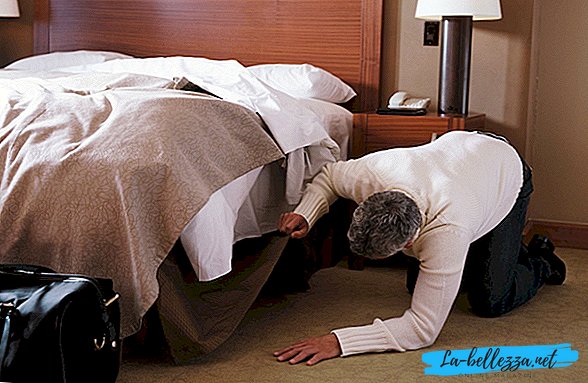
Two-thirds of all information about the world around a person perceives through vision. But do not forget about the rumor, it is necessary for understanding the interlocutor’s speech, often it signals the approach of danger, thereby saving lives.
Therefore, caring for the health of the ears is the responsibility of every person. If you do not pay attention to the first signs of otitis media in adults and do not start treatment, this will lead to deafness.
What is otitis media?
By this term is meant an inflammatory process in the ear. Depending on the location of the lesion, they distinguish:
• External otitis media has the easiest course, since changes in most cases are noticeable to the naked eye. It is dangerous for the development of complications, the spread of infection inside the ear.
• Otitis media is an inflammation of the elements of the tympanic cavity. In the people, it is this species that is simply called otitis.
• Internal - develops due to the spread of infection from the middle ear. Therefore, treatment of otitis media in adults should be comprehensive in order to avoid the development of complications.
What causes adult otitis media?
Any inflammatory process is impossible without the presence of pathogens. That is, the direct cause of otitis media in adults is bacteria, less often viruses or fungi (staphylococcus, moraxella, hemophilus bacillus, Candida fungi).
There are a number of predisposing factors that are provocateurs of otitis media:
• Injuries, bruises, ear scratches - the entrance gate for infection. If the skin is damaged, bacteria easily enter the bloodstream, causing inflammation.
• Acne on the face, near the ear are possible sources of infection, since all parts of the face have a common blood supply.
Remember! It is unacceptable to squeeze acne on the face yourself, especially above the upper lip. With blood flow, bacteria enter the brain, increasing the risk of meningitis, encephalitis, and internal otitis media.
• Chronic tonsillitis, pharyngitis, sinusitis can cause the first symptoms of acute otitis media in adults. The nasopharynx is connected to the middle ear by a thin tube through which the infection spreads.
• Foreign body, getting into the external auditory meatus, leads to skin irritation, its damage.
• “Swimmer’s ear” is a special term that means an increased risk of developing otitis media when water gets into your ear. This is especially true for contaminated water bodies.
• A common cause of otitis media in adults is excessive ear hygiene. You do not need to mechanically remove sulfur every day, this is a protective barrier against bacteria.
Signs of otitis media in adults - where does the disease begin?
The disease can occur acutely or chronically. The first symptoms of acute otitis media in adults are hard to miss: severe pain in the ear, fever, hearing loss. Clinical signs in the chronic course are weakly expressed, they are often not paid attention to, which leads to complications.
• Pain. Pain sensations differ with different flow patterns. In the acute process, it can be cutting, shooting, pulsating, in the chronic - dull, pressing. More often, patients describe it as a feeling of stuffy ear, discomfort, tinnitus. The pain intensifies with coughing, sneezing, turning the head.
• The temperature rises only during exacerbations, reaches 39 ° C.
• Hearing loss.
• Ear discharge is an intermittent sign of otitis media in adults. If the eardrum is not damaged, there will be no discharge. With a breakthrough, purulent or transparent contents flow out, while the pain decreases.
• Common symptoms include: headache, weakness, loss of appetite, sleep disturbance.
• If the infection has spread to the inner ear, dizziness, nausea, and in severe cases, vomiting, join the above symptoms.
Diagnostic search - how not to miss otitis media?
If you experience the first symptoms of otitis media in adults, you should consult a doctor. It is forbidden to start treatment on your own. To select the most effective means, you need to accurately establish the diagnosis, and it is impossible to do this without special tools. After all, most often inflammation occurs in the middle ear.
The main task of the doctor is to examine the external auditory canal, the eardrum. For this, special tools are used. The ear funnel is inserted into the external auditory canal, then with the help of the head reflector the doctor assesses the condition of the necessary structures. The procedure is painless, does not take much time. For a more detailed study, an otoscope is used.
Otitis externa
On examination, redness of the skin, areas of inflammation are noteworthy. The external auditory meatus is narrowed, there is swelling of the subcutaneous tissue. Sometimes it is not possible to inspect the eardrum due to severe swelling, narrowing of the passage.
Otitis media
Inspection includes an assessment of the eardrum: color, the presence of redness, holes, its mobility.
• There is a simple method for determining mobility. The doctor asks to puff out his cheeks, while his mouth should be closed. Air through the nasopharynx enters the middle ear, the membrane deviates outward. If this does not happen, most likely there is fluid in the tympanum.
• Audiometry is necessary to determine hearing impairment, often performed in a chronic process.
• Bakseeding is informative if perforation (breakthrough) has occurred. This diagnostic method allows you to determine the type of pathogen that caused inflammation, and sensitivity to antibiotics. Since the results of the study will be ready in a week, treatment of otitis media in adults begins without taking into account the pathogen.
• CT, MRI of the head are prescribed for severe cases, high risk of complications in order to exclude inflammation of the mastoid process, encephalitis.
Tactics of treatment of external otitis media in adults
If the symptoms of intoxication are mild, systemic use of antibiotics can be avoided, because it is always a load on the liver and kidneys.
There are local antibacterial drugs in the form of ear drops.
For maximum effect, anti-inflammatory drugs are added to reduce swelling, redness, and pain relief.
The duration of admission is determined by the doctor, on average it is 6-7 days.
Features of management of patients with otitis media
• Antibiotics - the drug of choice for otitis media of a bacterial nature. After two days of therapy, positive dynamics should be observed, otherwise it is necessary to prescribe another group of drugs.
• Antimycotic agents are effective for fungal infections, and antiviral agents for viral infections.
• If there is a high temperature, antipyretics are indicated.
• The inflammatory process is always accompanied by swelling of the mucous membranes, therefore, a mandatory component of treatment is vasoconstrictor drops in the nose. Thus, the outflow of fluid from the tympanic cavity into the nasopharynx is improved.
• In patients with severe pain, the doctor may prescribe painkillers.
Surgical treatment of otitis media in adults
Surgery is a last resort when medication does not help. In the presence of pus in the tympanic cavity, the ineffectiveness of antibiotics for three days, the deterioration of the patient's condition, it is necessary to carry out tympanotomy. During the procedure, a small incision is made in the eardrum, pus flows out. The patient's condition after the intervention is significantly improved. Tympanotomy is performed under pain relief and according to strict indications.
Note! It is forbidden to warm the ear yourself. In the presence of pus, this will lead to the spread of the process. This method of treatment can only be prescribed by a doctor after examination.
Prevention of otitis media in adults
To prevent the disease, you need to adhere to several rules:
• Timely treatment of SARS. Since the nasopharynx is connected to the middle ear, the infection spreads unhindered through the Eustachian tube. Particular attention must be paid to the common cold. Dense secretions contribute to the growth of bacteria, therefore it is recommended to drink more fluid, blow your nose regularly.
• Foci of chronic infection - tonsillitis, pharyngitis increase the risk of otitis media.
• After bathing, especially in open water, it is necessary to dry your ears thoroughly to prevent the ingress of water along with bacteria inside. Especially for people prone to otitis, they developed antiseptic drops that are buried in the ears after each bath.
• Proper ear hygiene is a key point in the prevention of otitis media in adults. It is forbidden to use sharp objects, pins, matches to clean ear wax. To do this, there are special cotton buds. Excess sulfur can only be removed from the outside. With deep cleaning, it is possible to push the sulfur even further, forming a cork.











